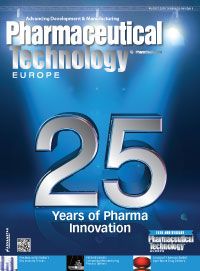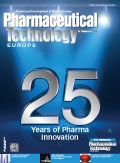Maturing Aseptic Technologies Create More Flexible Facilities
Pharmaceutical Technology Europe
Innovative therapeutic approaches beyond mAbs will require new methods for future facility construction.

Viewing Changes in Pharmaceutical Facility Design
Single-use systems, continuous processing and isolator technology use a smaller footprint. Experts predict how the facilities of the future may look much different than most today.
The growing, dynamic biopharmaceutical market requires efficient, flexible aseptic manufacturing and filling facilities. In the early 2000s, large facilities for mammalian cell-culture manufacturing were constructed due to the increasing demand for biopharmaceuticals, in particular for monoclonal antibodies (mAbs). Improvements in aseptic manufacturing led away from conventional cleanrooms to restricted access barrier system (RABS) facilities. RABS require significant cleanroom space and relatively high running costs for personnel gowning and monitoring activities.

Pharmaceutical Technology Europe25th Anniversary Issue
Currently, isolator technology is maturing. Installation of isolators leads to a smaller cleanroom footprint and reduced running costs but also to relative higher capital expenditures and longer changeover time. Changeover costs can be minimised by running long campaigns of the same product. An alternative to using one large isolator is the smart combination of individual isolators with separate air handling and decontamination units for filling, automated loading and deloading of freeze dryers, and material transfer, which allows parallel utilisation of different segments of the isolator plant.
Innovative therapeutic approaches beyond mAbs will require new methods for future facility construction. The production of high-potency biologics, conjugation of toxins with antibodies and their aseptic processing bring technological challenges. Some of these challenges can be addressed with the use of dedicated or single-use systems that avoid risk of cross-contamination and improve operator safety. Isolator systems can be designed to dock processing units (e.g., unpacking, filling and stoppering or freeze drying and capping) together, with decontamination airlocks to allow transfer of sterile materials into the process. The isolators can be operated in overpressure or underpressure mode with changeable dust filters in the air return to make them ready for highly potent drug processing.
The combination of these flexible isolators with ready-to-use components, which is a well-established technology for prefillable syringes that is now also available for vials and cartridges, allows further reduction of cleanroom footprint and up-front capital expenditure and rapid product changeover at relatively low running costs.

About the Author
Friedrich Haefele, PhD, is head of Biopharma Fill & Finish Germany for Boehringer Ingelheim. Boehringer Ingelheim received an ISPE 2014 Facility of the Year Award for Equipment Innovation in its aseptic drug-product manufacturing area at the company’s Biberach, Germany site.

Pharmaceutical Tariffs Are Imminent: How Industry is Bracing for Impact
April 16th 2025On April 14, 2025, the Trump Administration launched a national security-driven investigation into pharmaceuticals, a move that will likely result in tariffs being placed on pharmaceutical drugs, ingredients, and other components that are imported from outside of the United States.
Drug Solutions Podcast: A Closer Look at mRNA in Oncology and Vaccines
April 30th 2024In this episode fo the Drug Solutions Podcast, etherna’s vice-president of Technology and Innovation, Stefaan De Koker, discusses the merits and challenges of using mRNA as the foundation for therapeutics in oncology as well as for vaccines.